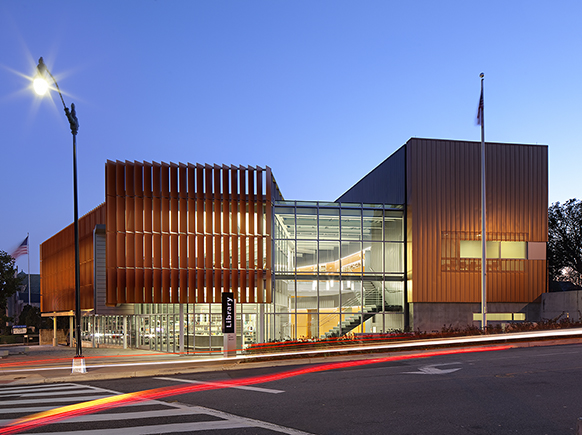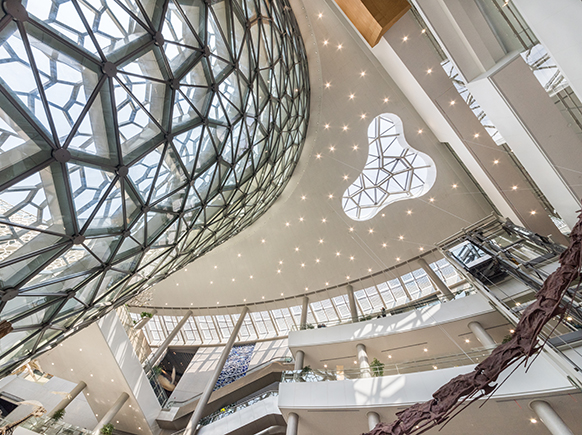OK, I’ll admit it. I well up in tears watching almost any episode of This Is Us. Have I gone soft? Have I become an easily manipulated emotional puppet of pop culture? Or, are Hollywood screenwriters simply some of the best raconteurs on the planet? Their stories conjure feelings of joy, nostalgia, laughter and, yes, tearful empathy.
When was the last time a building made you cry? Or made you giddy to climb out on the roof to watch the sunset? What was the last space that made you want to be a better person? Could the stories we tell through architecture go beyond pragmatic communication and instead evoke emotional responses?
We live in a time when customers want to connect to products and services in a personal way – interacting with brands to form communities that are increasingly about public service, education, or partnering as cultural benefactors. How do successful brands do this? By narrating stories in which their customers can actively participate. As architects, perhaps we should take a cue from the yarn-spinning masters of television and film to engage our audience – the users of our buildings – to participate in the stories we tell.
On a flight back from a recent library visioning workshop, I happened upon a Wall Street Journal article that unpacked the story-telling devices woven into NBC’s hit series This Is Us, the highest rated new series among adults under the age of 50. Jorgenson broke down its success into five fundamental concepts. It got me to thinking about how techniques of cinematic storytelling might translate into the architecture of libraries.
The Photo Album Effect
For This Is Us newbies, the series follows an extended family of characters through multiple time periods. There is no magical time travel. There are no contrived cause-and-effect flashbacks. Rather, it is like paging back and forth through a family photo album without the constraints of chronology. Like random snapshots clustered on a single page, it feels casual and finds meaning through moments of serendipity.
Within our libraries, could history walls and exhibits of new scholarship be less formal and more interactive? Might they be more integrated with daily use? Could designs offer visual cues about the evolution of collections, new modes of scholarship, or changing user profiles? In this case, change over time need not follow linear chronology, but might be a network of events bound by universal themes of data preservation, knowledge acquisition, or an enduring culture of vigorous debate – themes where patrons can insert themselves at multiple moments.
Getting Fans To Fill In The Blanks
This Is Us creates “space” in the narrative where fans can crowdsource theories and fill in unresolved storylines. In so doing, they forge satellite communities around shared interests. Might the library of the future feature places where patrons build personal “my library spaces” that link to groups with shared academic interests? Could the library be a data platform where customers swipe right or left to find intellectual affinity groups? As a machine for learning, can the library actively integrate the “social” by building pathways to connect?
Deceased Characters Don’t Have To Disappear
By using a non-linear time narrative, stories loop between “later-nows” and “past-nows.” There is no future or past. It’s all just “now”. Rather than having a beginning, middle, and end, it is a journey comprising an endless series of moments that find justification in a past or inform a future. Nothing is insignificant. The brushed aside comment or haphazard object on the table could be the key to a past triumph or future tragedy.
In the library, might the juxtaposition of forward-facing Special Collections with future-leaning Digital Scholarship demonstrate how past knowledge builds on itself to become relevant again and again. As digitization efforts accelerate, and constraining copyright laws are dismantled, we will no longer have to choose what knowledge stays and what goes. Like our chronology liberated characters, information no longer disappears. It’s there to build and rebuild new connections.
An Epic of Everyday Life
This Is Us writers plant visual cues in the show that may prove significant later as the saga unfolds. Spoiler alert: that seemingly innocuous slow cooker gifted by the neighbor becomes the source of a cataclysmic fire later. If Chicago Public Libraries showcased Chance the Rapper’s demo tape that came out of the library’s YOUmedia Center, would it raise the importance of ongoing youth projects that might produce the next Chance? Might Duke University Libraries showcase the laser technology that enabled non-destructive digital remastering of long silent wax cylinder recordings – a tangible demonstration of technology’s relevance in new humanities scholarship? The recently renovated New York Public Library is showcasing influential books like Robert Caro’s Pulitzer Prize winning The Power Broker and Betty Friedan’s ground breaking The Feminine Mystique – books that were researched and written in the great halls of the library. It makes one realize that the seemingly obscure work at hand could be the cultural landmark of the future.
Counter Programming To Current Events
Aligning narrative themes with current events creates instant relevance. It recognizes the fact that we are all impacted by, and therefore keenly interested in, the political, social, and economic events of the present. Why not bring these issues into the library by structuring it as a platform for exchange – a safe forum for discussion. The library can offer real and virtual conversation walls that record collective responses to topical questions. Crowdsourced opinions on current issues could be used to build community profiles one day at a time – profiles against which individuals can re-assess their personal values. What issues unite and what issues divide the community? And, for that matter, what do we consider our community? By harvesting this data in real time, the library could feature pop-up collections and resources curated around those issues.
Whether libraries will ever tug at the heart strings like This is Us, I can’t say. But they certainly house just as many stories. And isn’t it our role to invite people to curl up and binge on a few?



